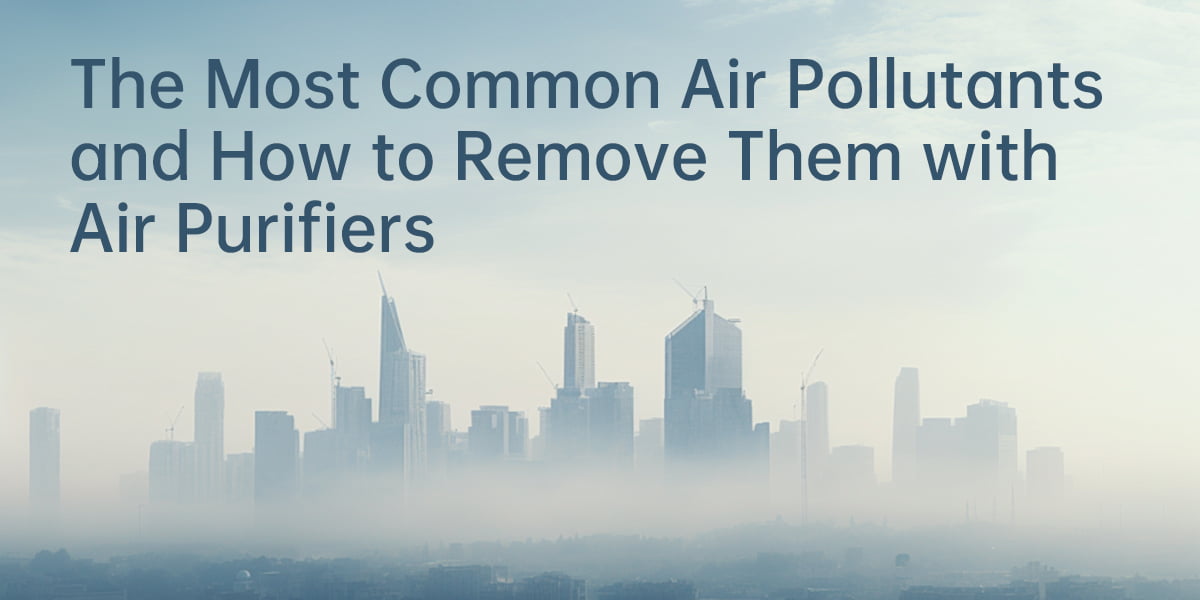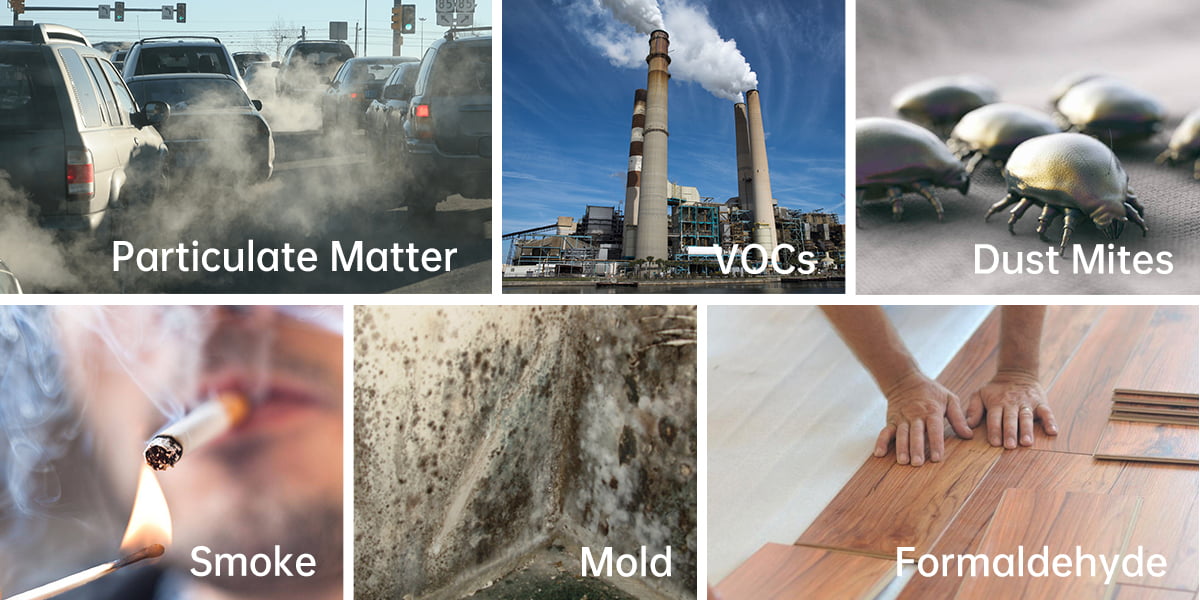The Most Common Air Pollutants and How to Remove Them with Air Purifiers

Air pollutant is an urgent problem for every household. It can lead to poor indoor air quality and indirectly lead to health problems. Let’s discuss the most common indoor air pollutants together and how to effectively remove them. The most common air pollutants are:
Particulate Matter (PM): This includes tiny particles such as dust, dirt, soot, and smoke. These particles can be inhaled and can cause respiratory problems, especially in people with allergies or asthma.
Volatile Organic Compounds (VOCs): These are chemicals found in many household products, such as cleaning supplies, paints, and adhesives. They can cause eye, nose, and throat irritation, headaches, and dizziness.
Dust Mites: Dust mites are tiny, microscopic creatures that are found in most homes. They are members of the arachnid family, which includes spiders and ticks. Dust mites feed on dead skin cells that are shed by humans and pets, and they thrive in warm, humid environments.Dust mites are not harmful to most people, but they can trigger allergic reactions in some individuals. The symptoms of a dust mite allergy can include sneezing, runny nose, itchy eyes, and asthma symptoms such as coughing and wheezing.
Smoke: Smoke is a common air pollutant that can come from various sources such as wildfires, tobacco smoke, and indoor cooking. Smoke contains a mixture of gases and fine particulate matter that can be harmful to human health, especially for those with respiratory problems such as asthma and chronic obstructive pulmonary disease (COPD). The fine particulate matter in smoke can penetrate deep into the lungs and cause inflammation, which can worsen existing respiratory conditions and increase the risk of heart disease and stroke. The gases in smoke, such as carbon monoxide and nitrogen oxides, can also be harmful to human health.
Mold: Mold is a type of fungus that can grow in damp or humid conditions, both indoors and outdoors. When mold spores are released into the air, they can become an air pollutant. Exposure to mold can cause a variety of health problems, including respiratory problems, allergic reactions, and skin irritation. Mold can grow on many surfaces, including walls, ceilings, floors, and furniture. It can also grow in HVAC systems, air ducts, and other areas of the home where moisture is present. In addition to causing health problems, mold can also cause damage to buildings and other structures.
Formaldehyde: This is a colorless gas that is found in many household products, such as furniture, flooring, and insulation. It can cause eye, nose, and throat irritation, as well as headaches and dizziness.

To remove these pollutants from the air, you can use an air purifier.
Pre-filter can capture larger particles such as dust, hair, and pet dander before they reach the main filter in an air purifier. It can also help to extend the life of the main filter and improve the overall efficiency of the air purifier.
Activated carbon filter remove odors, gases, and volatile organic compounds (VOCs) from the air. They work by adsorbing these pollutants onto the surface of the carbon filter, which traps them and prevents them from circulating back into the air.
HEPA filter remove small particles as small as 0.3 microns such as bacteria, mold and pollen from the air. HEPA filters work by using a dense mat of fibers to trap particles as air passes through the filter.
UVC light works by damaging the DNA of microorganisms such as bacteria, viruses, and mold, which prevents them from reproducing and rendering them harmless.

When choosing an air purifier, consider factors such as the size of the room, the type of pollutants you need to remove, and the noise level of the purifier. Look for air purifiers that use HEPA filters, activated carbon filters, or other technologies that are effective at removing pollutants from the air.



